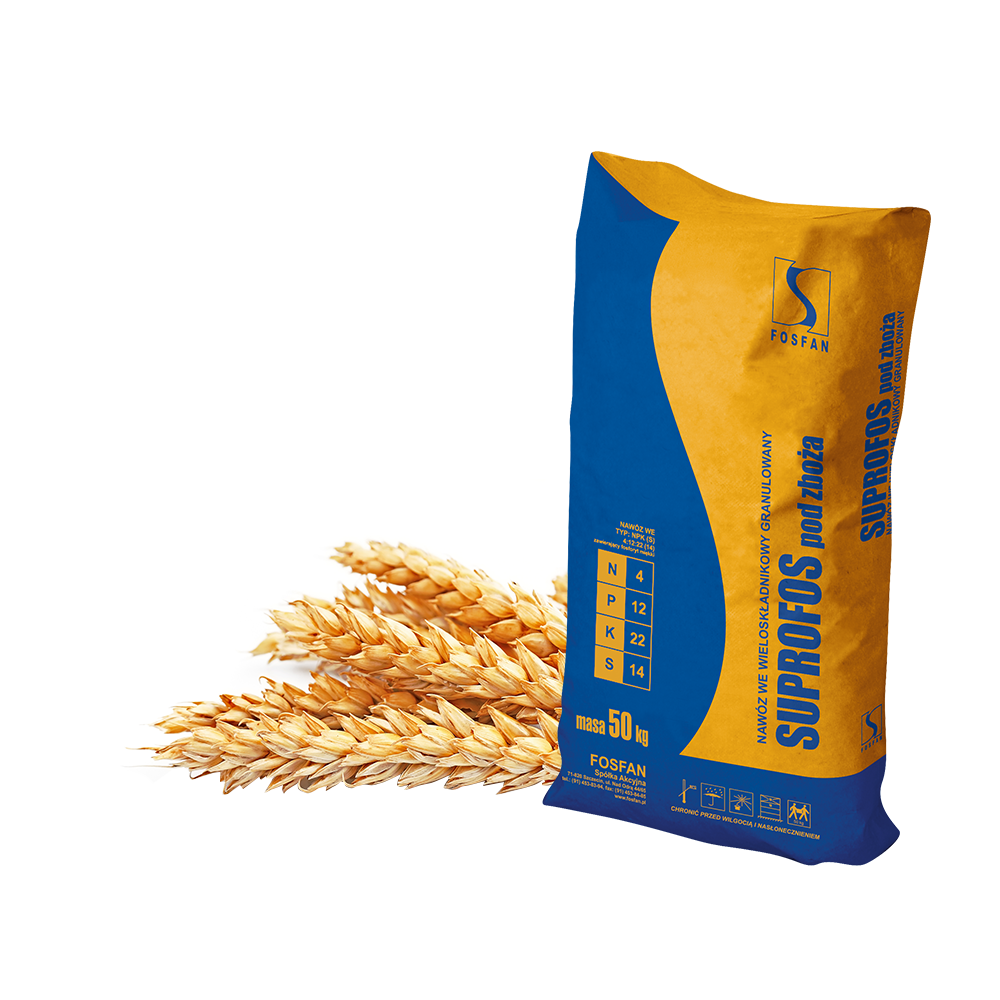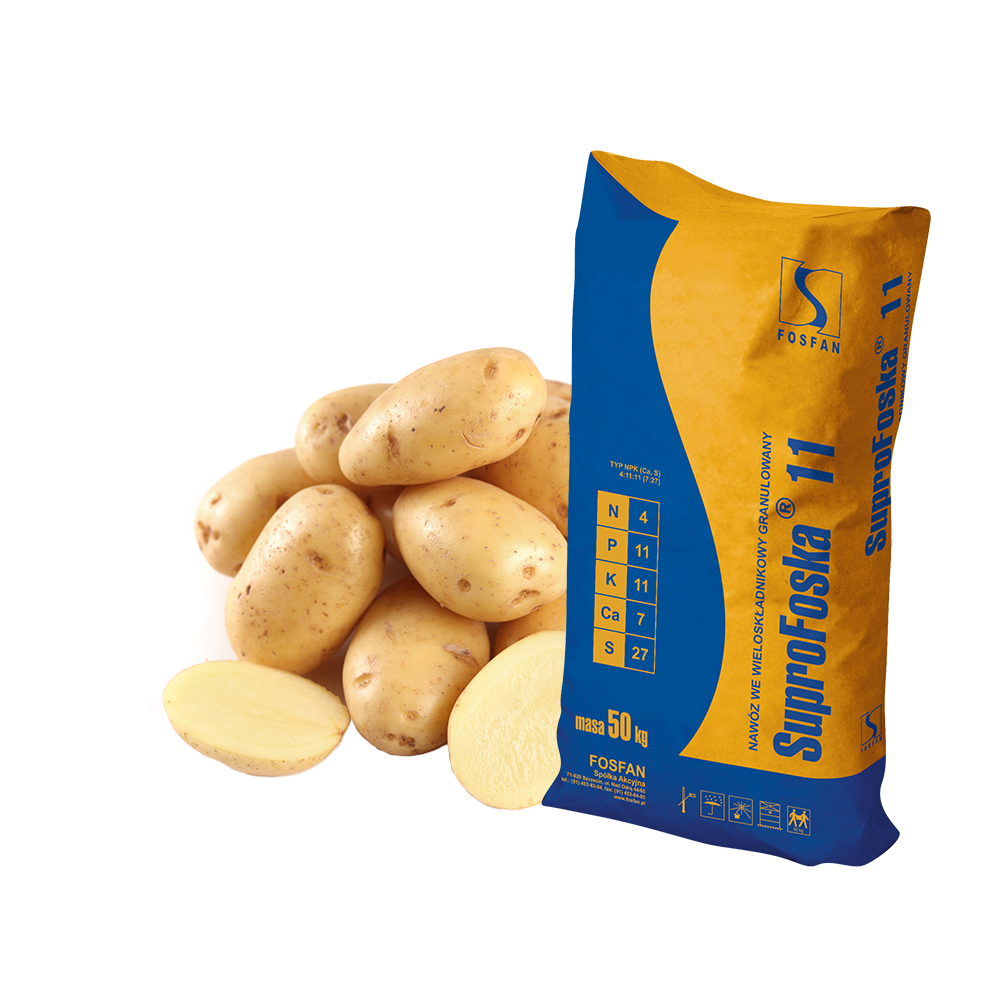Advice
Fertilization of cereals
Cereals belong to arable crops which include, among others, wheat, rye, barley, oats, maize and rice. These are plants that, being an integral part of the daily diet of each of us, are widely used primarily in the food industry. Moreover, they are also the main direction of the agricultural production in Poland. Cereals are also used, among others, for the production of biofuels and renewable energy. In order to obtain high yields of cereal crops an appropriately adjusted fertilization program should be applied.
more
Majority of Polish arable soils are poor in available for plants forms of phosphorus, calcium, magnesium, sulphur. Each cereals yield of 3 tonnes of grain and 5.5 tonnes of straw per hectare we take away from the field about 85 kg of nitrogen, 40 kg of phosphorus, 100 kg of potassium, 30 kg of calcium, 20 kg of magnesium and 20 kg of sulphur. Therefore, for achieving high crops that will be valuable in terms of consumption, feedstuff and technology it is necessary that good compound fertilizers with proven quality and composition adapted to specific soil conditions should be applied.
NITROGEN (N)
All cereals strongly react to nitrogen fertilization. Nitrogen deficiency in the soil causes that the plants are pale, they grow slowly and weakly propagate, they grow small spikes with small poorly developed grains. In agricultural practice an excessive use of this nutrient often takes place, which is manifested in a dark colour, too lush growth and strong propagation of the cereals. This state is particularly unfavourable in the case of winter crops, because it reduces their resistance to frost. In spring and summer an excessive elongation of the blades can be observed, which creates favourable conditions for the occurrence of cereal rust and powdery mildew. Grain maturation period of over-fertilized cereals is extended.
Negative effects of excessive fertilization with nitrogen are prevented by the use of complex fertilizers such as SUPROFOS POD ZBOŻA (SUPROFOS FOR CEREALS), SuproFoska 11, SuproFoska 14, SuproFoska 20 or SuproFoska 22. According to agro-technological recommendations the listed fertilizers are applied in the case of spring cereals in autumn or spring after the snow melts. Their components (phosphorus, potassium, calcium, magnesium, sulphur, boron, copper and others) ensure better plant resistance to ground freezing, drought, lodging as well as reduce the incidence of fungal disease. As a result, a yield of straw and grain that are better developed, have a greater mass and the optimum chemical composition increases.
The application of the above-mentioned compound fertilizers prevents physiological diseases resulting from a deficiency of nutrient elements in the soil.
Phosphorus (P)
Plants insufficiently provided with phosphorus are small, low, dark, fail to propagate. On older leaves purple-red colouration appears after which they wither taking on a dark brown colour. Cereals develop small spikes containing poorly filled grain.
Potassium (K)
Lack of potassium in cereals is manifested with withered plants habit and their blue grey colouration. Older leaves are curled, turn yellow at the top and around the edges, while the main vein stays green for long. Spikes are small, grains are small and shrivelled.
MAGNESIUM (MG)
Symptoms of magnesium deficiency is beading or striping of oats and rye leaves or uneven distribution of green dye between the veins. In wheat and barley a symptom of a lack of magnesium is visible as strong chlorosis of oldest leaves first covering the leaf top and edges and then the entire surface on which simultaneously appear rusty drying patches.
Copper (Cu)
Oats and wheat growing on sandy or peat soils are particularly sensitive to copper deficiency. Symptoms of lack of this element are so called a disease of new moon. A few weeks after emergence, the vertices of older leaves turn white, while young leaves strongly twist and die not reaching the right size and shape. All the stalks together with ears (oats) or spikes (wheat, rye) are pale green and deformed. With weaker copper deficit cereals grow slowly, they have striped leaves, and stalks filled with tiny tailings or sparks.
MANGANESE (MN)
Characteristic symptoms of manganese deficiency occur most frequently in the form of grey brown or bright streaks between veins in the middle of leaf blades (so called grey spot disease). Subsequently, these spots grow and coalesce with each other. The affected tissue eventually dies after a time and chips, due to which leaves bend and look like broken. These symptoms are usually found in oats, less frequently in other cereals.
FOR GROWING CEREAL CROPS WE RECOMMEND
Show all products for fertilization of cereals










